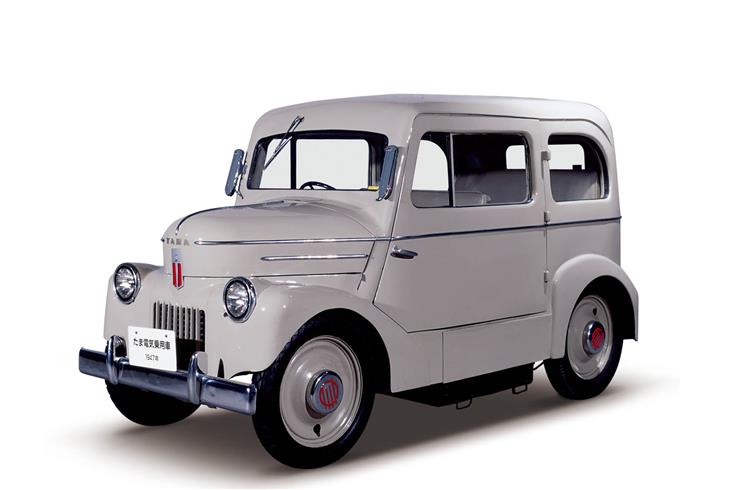Nissan's Leaf has its roots in the 1947 Tama electric car
On the cusp of the next-generation Nissan Leaf that arrives later this year, the Japanese carmaker’s EV roots were in a car that was born nearly 60 years ago.
As Nissan Motor Co gears up to reveal the all-new Leaf, it’s interesting to learn that the Japanese carmaker had its early EV roots in the Tama which was introduced in 1947.
During the 1940s' switch to a peacetime economy, Tachikawa Aircraft (later Tama Cars Co.) embarked on the development of electric vehicles (EVs). One reason for this was the extreme shortage of petrol at the time. In 1947, the company succeeded in creating a prototype two-seater truck (500kg load capacity) with a 4.5-horsepower motor and a new body design. It was named ‘Tama’ after the area where it was produced and had a top speed of 34kph (21mph).
The company then went about creating its first passenger car. With two doors and seating for four, it boasted a top speed of 35kph (22mph) and a cruising range of 65km (40 miles) on a single charge. The former aircraft maker employed many unique ideas in the design and construction of the Tama, such as its battery compartments.

The Tama came in passenger car and truck models, and both were available in petrol and electric versions. In June 1948, Tachikawa Aircraft changed its name and commenced operations as Tokyo Electric Cars Co. Tama Electric Cars Co became Tama Cars Co. These two companies were responsible for the Tama Junior (1948 compact passenger car) and Tama Senior (1949 medium-size passenger car). In 1952, it became the Prince Motor Co., Ltd, and in 1966 Prince merged with Nissan.

The battery compartment was in the cabin floor of the Tama electric car. There were two such compartments, one on either side. Each battery case was provided with rollers so that used batteries could be quickly exchanged with freshly charged ones. Thanks to such engineering, the Tama took top honors in the performance tests conducted by the Ministry of Commerce and Industry in 1948.

The 1947 Tama headlight, left, advanced for its day, looks simple compared to the modern lighting of the upcoming next-generation Nissan Leaf.
1947 TAMA ELECTRIC CAR SPECIFICATIONS
Overall length/width/height: 3,035/1,230/1,630mm
Wheelbase: 2,000mm
Kerb weight: 1,100kg
Seating capacity: 4
Cruising range per charge: 65km (40 miles)
Motor (36V): DC series-wound, rated at 3.3kW (4.5 hp)
Batteries (capacity): Lead-acid battery (40V/162Ah)
Top speed/economical speed: 35kph / 28kph
RELATED ARTICLES
BRANDED CONTENT: Eliminating the worries of battery charging with smart solutions
The charging infrastructure is the backbone of electric mobility but is also one of the key perceived barriers to EV ado...
The battery-powered disruptor
Greenfuel Energy Solutions is planning to shake up the EV battery market with the launch of a portfolio of specially eng...
SPR Engenious drives diversification at Shriram Pistons & Rings
The engine component maker is now expanding its business with the manufacturing of motors and controllers through its wh...





 By Autocar Pro News Desk
By Autocar Pro News Desk
 15 Jun 2017
15 Jun 2017
 16916 Views
16916 Views









